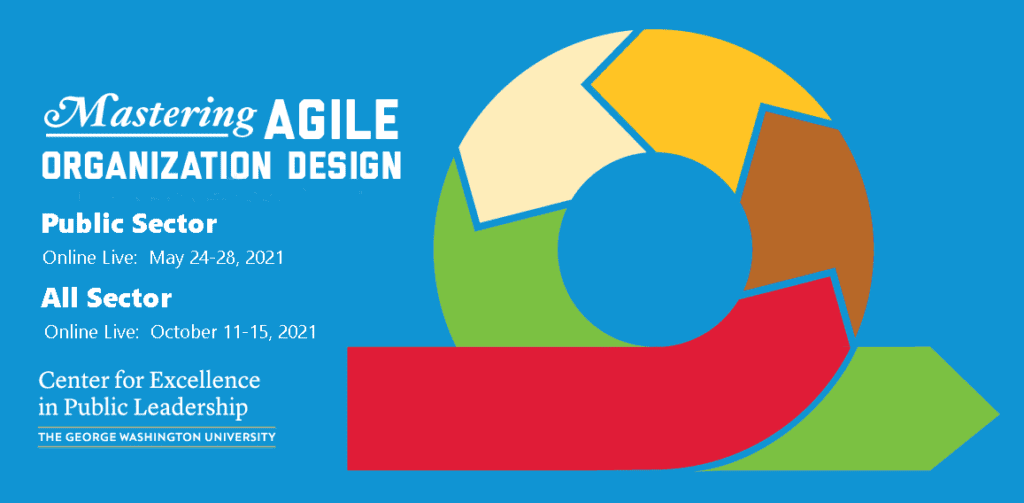The design of an organization not only matters… it matters a lot. Design impacts organizational performance, customer satisfaction, workforce well-being, and more.
Why? Because good organizational design aligns everything about an organization to its strategy. In essence, effective design puts “strategy on the ground” by clarifying how an organization will function to achieve its mission by articulating important “how” requirements:
- how to group functions or individuals together to operate efficiently;
- how to allocate authority and establish reporting relationships;
- how to define roles and responsibilities and jobs to accomplish the work at hand; and
- how different functions coordinate or integrate in the execution of the work.
Because organizational structure is a proxy for power relationships, and boxes on a chart are tangible areas to focus on, structure often draws the focus and attention of leaders and managers alike. That said, structure is but one component of organizational design.
While we typically think of applying design principles within an organization, they are also valuable when stakeholders from different organizations work together collaboratively to solve complex problems, such as through a Public-Private Partnership (PPP). PPPs are a collaborative working relationship based on a mutual commitment (over and above that implied in any contract) among one or more public sector organizations and organization(s) outside the public sector (including industry, academia, and other not-for-profits), in which the goals, structure, and governance, as well as roles and responsibilities, are mutually determined and decision-making is shared. Partners are jointly dedicated to shared goals and bring both commitment and competence to the table, thereby creating the classic synergy (the whole being more than the sum of the parts).1 PPPs are about generating breakthrough collective impact.
When designing a new organization or PPP – or redesigning an existing one – there are two critical success factors that apply to both.
- First, form follows function. Particularly for PPPs, we have sometimes observed groups that focus too early on the form (e.g., structure, governance, and processes) before partners have come to agreement on function. Make sure it is clear what the work of the PPP will be before getting too far into design. What are partners coming together to accomplish? What are the goals of the partnership, and what work must be done to achieve those goals? Which organizations (e.g., partners and collaborators) must be involved to achieve those goals, and what does that involvement entail?
1 Based on definitions by 1) Brinkerhoff, Derick W., and Jennifer M. Brinkerhoff. “Public–private partnerships: perspectives on purposes, publicness, and good governance.” Public Administration and Development 31.1 (2011): 2-14, and 2) U.S. Department of State, State of Global Partnerships Report 2016. Accessed at https://2009-2017.state.gov/s/partnerships/releases/reports/2016/254029.htm
- Second, key leadership must be engaged in the design or redesign process. For organizations, this often refers to executive level decision makers and impacted managers. For PPPs, this refers to having the right partners (or prospective partners, or early adopters) working together to co-create the design. That is, both public and private partners must have a voice in determining how decisions will be made and defining roles and responsibilities for those involved along with the processes by which their collective work will be accomplished.
Another critical success factor that is especially relevant to PPPs is the need to bake in flexibility, adaptability, and responsiveness to evolving priorities, threats, and opportunities. A slow PPP – one working at the speed of government – is a soon-to-be irrelevant PPP.
How do you bake in flexibility? We offer a few thoughts:
- Design governance and processes to be as light as possible – resist any urge to over-engineer how a PPP operates, and think clearly about which types of decisions require coordination and consensus of the partnership including those that can be delegated.
- Design and enable an executive governance board that can quickly make decisions when needed and a management team with the authority to execute on those decisions.
- Invest in a collaborative infrastructure for the PPP that enables partners from different organizations to collaborate effectively in a virtual workspace so data, information, and decisions can move at the pace required to drive value.
- Provide flexibility to rapidly stand up new working groups comprised of key experts to address new and emerging issues and don’t be afraid to re-prioritize and sunset working groups that are not driving the necessary value and impact.
- Plan up front for flexibility in both contracting and funding mechanisms.
- Draft and execute PPP legal agreements and policies that plan the evolution and maturation of PPPs with some level of uncertainty. Once drafted, ensure that amendments and updates can be made efficiently.
- Design work processes based on agile principles, with discrete sprints and clear opportunities for collaboration among partners within each sprint.
- Periodically and honestly assess the progress, health, and value of the PPP and identify opportunities for improvement – and then make decisions and execute on the most important ideas that emerge.
There is no perfect design for organizations or PPPs, and designs must evolve and mature over time. Having said that, spending the necessary time during the start-up phase to co-create a PPP with intentionality – one that is fit-for-purpose, has the buy-in of partners, and is able to flex and adapt to evolving needs – will pay dividends for years to come in collective impact.
About the Authors
Amy Aukema is a Principal at MITRE with expertise in strategic, organizational change, and transformation management. She co-leads MITRE’s PPP Community of Practice and has helped to launch, operate, and mature several PPPs in the healthcare, financial, and safety domains.
Andy Dziewulski is a Senior Principal at MITRE and the director of a PPP composed of states, tax industry entities, and the federal government. The partnership is addressing challenges such as taxpayer authentication, fraud identification, and expanding information sharing.
Candi Waller is an Organizational Change Management Lead with expertise in organization change, stakeholder engagement, and strategic communications. She has worked on the stakeholder engagement teams for several PPPs cultivating relationships rooted in trust for the success of the partnership.
Ed Walsh is a Principal at MITRE with expertise in program management and governance. He assists the MITRE PPP Community of Practice and has helped launch PPPs in transportation and healthcare domains.
Ted Sienknecht is a Principal Architect for PPPs at MITRE with expertise in data- and user-centric solutions. He founded and co-leads MITRE’s PPP Community of Practice. Ted has co-created and matured PPPs in the healthcare, financial, safety, and cybersecurity domains.
© 2021 The MITRE Corporation. All Rights Reserved. Approved for Public Release; Distribution Unlimited. PR_20-02928-1. The authors’ affiliation with The MITRE Corporation is provided for identification purposes only and is not intended to convey or imply MITRE’s concurrence with, or support for, the positions, opinions, or viewpoints expressed by the authors.
Looking to learn more about Agility and Organization Design?

Offered in association with the George Washington University’s Center for Excellence in Public Leadership, part of the College of Professional Studies, the Mastering Agile Organization Design certification program trains public sector professionals to construct high-performing, agile and responsive organizations. Participants learn how to anticipate and overcome shifting public priorities and unforeseeable obstacles through the practical application of organizational design principles, by strengthening team collaboration and by placing more emphasis on systems thinking, planning and action.
2021 cohorts scheduled for May (Public Sector) and October (All Sector).
